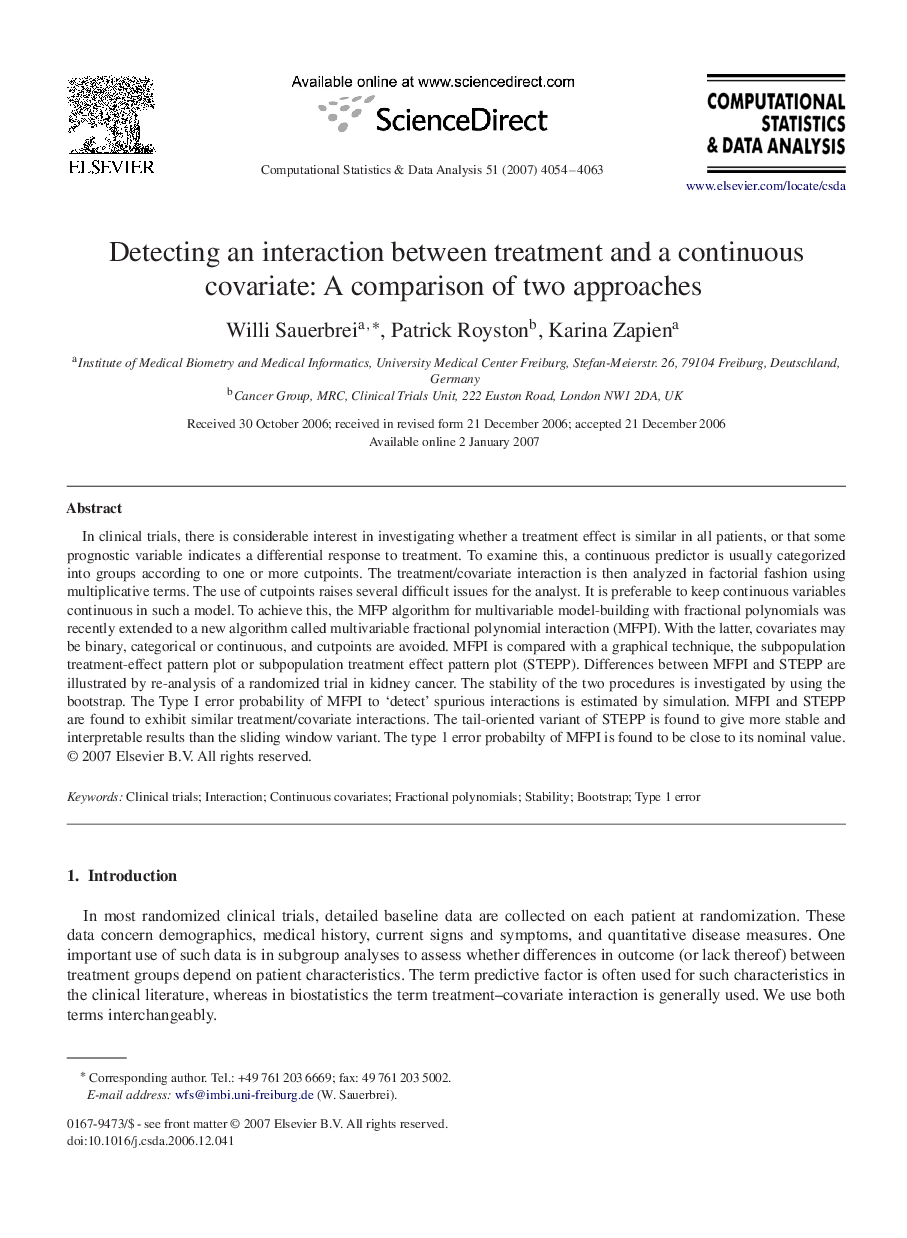| Article ID | Journal | Published Year | Pages | File Type |
|---|---|---|---|---|
| 416204 | Computational Statistics & Data Analysis | 2007 | 10 Pages |
In clinical trials, there is considerable interest in investigating whether a treatment effect is similar in all patients, or that some prognostic variable indicates a differential response to treatment. To examine this, a continuous predictor is usually categorized into groups according to one or more cutpoints. The treatment/covariate interaction is then analyzed in factorial fashion using multiplicative terms. The use of cutpoints raises several difficult issues for the analyst. It is preferable to keep continuous variables continuous in such a model. To achieve this, the MFP algorithm for multivariable model-building with fractional polynomials was recently extended to a new algorithm called multivariable fractional polynomial interaction (MFPI). With the latter, covariates may be binary, categorical or continuous, and cutpoints are avoided. MFPI is compared with a graphical technique, the subpopulation treatment-effect pattern plot or subpopulation treatment effect pattern plot (STEPP). Differences between MFPI and STEPP are illustrated by re-analysis of a randomized trial in kidney cancer. The stability of the two procedures is investigated by using the bootstrap. The Type I error probability of MFPI to ‘detect’ spurious interactions is estimated by simulation. MFPI and STEPP are found to exhibit similar treatment/covariate interactions. The tail-oriented variant of STEPP is found to give more stable and interpretable results than the sliding window variant. The type 1 error probabilty of MFPI is found to be close to its nominal value.
